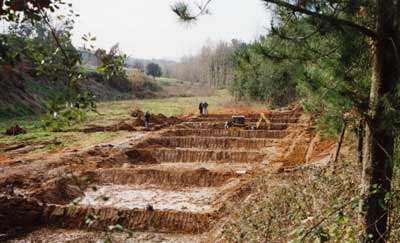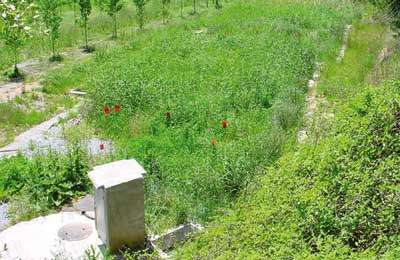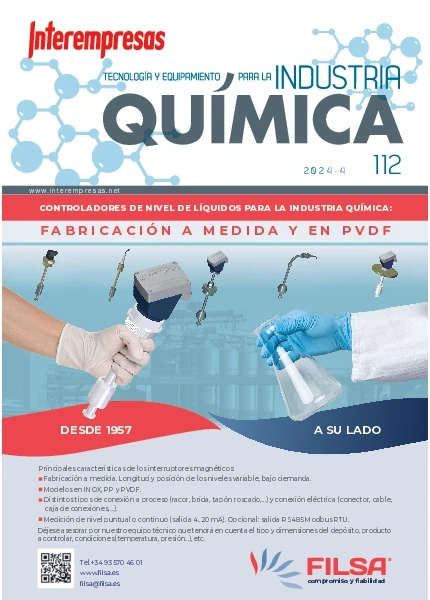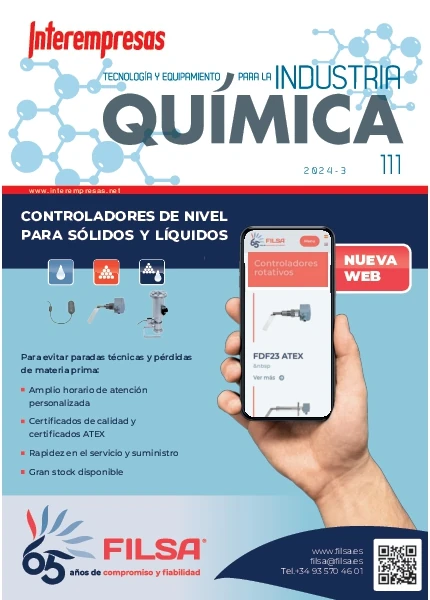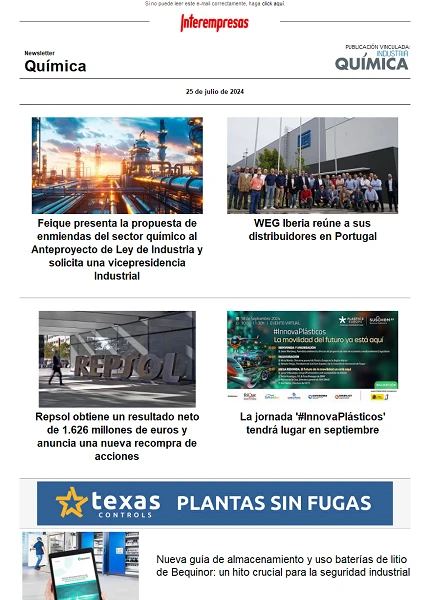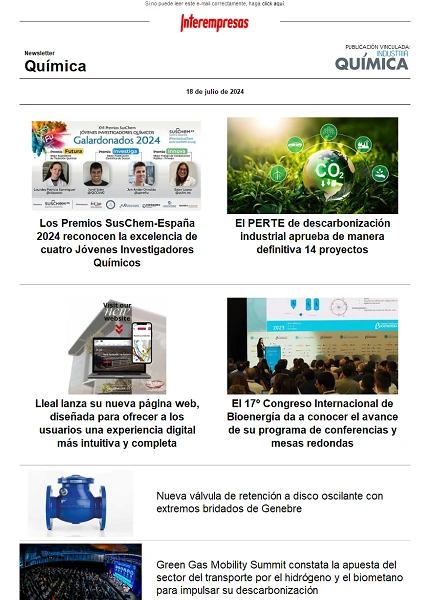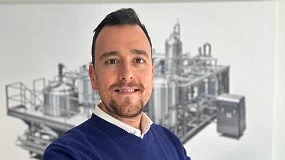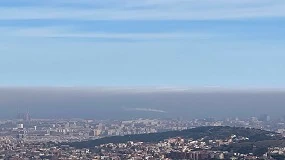This news article was originally written in Spanish. It has been automatically translated for your convenience. Reasonable efforts have been made to provide an accurate translation, however, no automated translation is perfect nor is it intended to replace a human translator. The original article in Spanish can be viewed at
Humedales construidos para el tratamiento de aguas residualesCriteria for design, construction and operation
Wetlands constructed for the treatment of wastewater
Joan Garcia (1) and Jordi Morató (2); and Josep M. Bayonne (3)
Universitat Politècnica de Catalunya (1 and 2), Centre for research and development of Barcelona, CSIC (3)01/04/2005
Research conducted at the pilot plant Can "Suquet" have shown the efficiency of wetlands to eliminate a wide range of pollutants, including pollutants conventional as the cod, BOD or nutrients. More basic aspects such as the hydrodynamic characteristics of wetlands, biochemical reactions responsible for the degradation of organic matter, and the dynamics and composition of the biofilm have also been studied.
Constructed wetlands are simple purification systems that do not require external power to run. There are two types of subsurface flow or surface flow. The workflow surface are often used in programs of environmental restoration where debugging is an added value. In this case they often receive which have already been dealt heavily in sewage effluents and, therefore, the wetlands system aims to make a refining of the quality of the water (García y Mujeriego, 1997).
Subsurface flow, on the other hand, are usually built to try to simply pretratadas waters and are, therefore, the key processing in the installation of purification unit. Such facilities are often used to purify wastewater of small towns, although there are numerous documented applications (water in paper mills, pharmaceutical, industry oil, landfill leachate, etc.). This article describes the projects and progress that the authors have reached with subsurface flow systems.
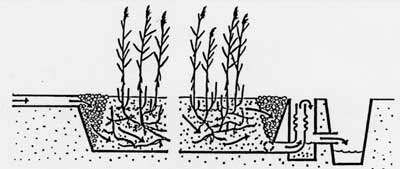
Figure 1. Scheme of a horizontal subsurface flow constructed wetland
(assigned by H. Briox)
Subsurface flow
Subsurface flow wetlands are made up of rafts usually built by excavation, a half-filled granular with enough hydraulic conductivity (gravel) and planted with plants typical of wetlands, such as the carrizo and the belfry. The water circulates at underground level in contact with the medium granular and the roots and Rhizomes of the plant (Figure 1). The removal of contaminants occurs through a synergy of processes physical, chemical and biochemical, although the main ones are the biochemical associated to the biofilm that attached to the medium grows granular and the underground parts of plants.
The main role of plants in these systems is the create an environment around their underground parts right so that they grow and develop microbial communities that after going to degrade or transform the pollutants. Subsurface flow systems can be classified into horizontal if the water flows horizontally from one extreme to another (would be the case of Figure 1) or vertical if the water flows from top to bottom (Garcia et al., 2004a).
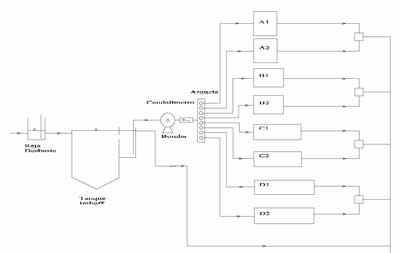
Figure 2.
Diagram of the pilot plant.
Plant Can Suquet pilot
Thanks to funding obtained through an ERDF project was built in the early 2000s a pilot plant that is partially the waters of urbanization can't Suquet, in les Franqueses del Vallés (Barcelona). This plant was built in collaboration with the consortium of the Besós and Les Franqueses City Council. The plant went into service in spring of 2001 and are expected to remain in place at least until 2008.
The plant consists of a primary treatment in an Imhoff tank, followed by eight wetlands in parallel with the same area (56 m2 each), as they receive the same flow of waste water and that have different characteristics of design (largo-ancho connection)(, the medium size granular and depth) (figures 2-6). The design of the pilot plant has allowed to study the influence of these variables of design on the efficiency of the system, as well as the applied organic load (which is regulated through the flow of water pumped to the wetlands).
Figure 3. Excavation of the wetlands (late 2000).
Figure 4. Filling and plantation of wetlands (March 2001).
Wetlands are simple purification systems that do not require external power to run
From the beginning up to the present efficiency of wetlands has been evaluated to eliminate a wide range of pollutants, including polluting conventional laDQO, BOD and nutrients, anionic surfactants, fatty acid of short-chain, sulphides, pharmaceutical products of common use and micro-organisms indicators of fecal contamination such as e. coli, spores of Clostridium perfringens and fecal enterococci among others. More basic aspects such as the hydrodynamic characteristics of wetlands, biochemical reactions responsible for the degradation of organic matter, and the dynamics and composition of the biofilm have also been studied.
Table 1 summarizes the results for some of the pollutants discussed. In the table data from the effluents of the wetlands have been grouped by types. As you can see the best results are obtained with the wetlands of type D for all pollutants. These wetlands have a smaller depth (0.3 m on average) than the rest (0.6 m in average). This result is surprising since to have less depth and receive the same flow as the others, their length of stay is less. However, various studies carried out by our teams have shown that the conditions inside are more oxidizing, resulting in greater efficiency (Garcia et al., 2003).
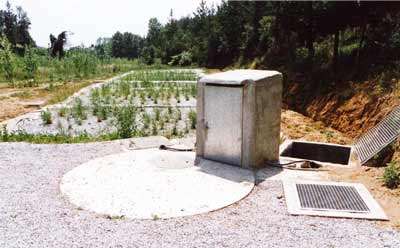
Figure 5. Wetlands with incipient coverage (April 2001). Shows the cover of the Imhoff tank and stand where the flow-meter.
The plant consists of a primary treatment in an Imhoff tank, followed by eight wetlands in parallel
Now with experimental laboratory wetland whose depth is constant 0.3 m (in the Can Suquet of type D depth of 0.3 m is an average, there are areas in more depth and others with less) are being spectacular results with BOD5 and ammonia under the age of 5 mg/L effluent.
Wetlands of type D have also shown a better performance in terms of removal of fecal enterococci, spores of Clostridium perfringens and count of aerobic bacteria (HPC, 22 ° C), with reductions in some cases of up to 3 log or higher. In Exchange, the reduction of total coliforms and Escherichia coli has been slightly higher in the wetlands of type C.
Figure 6. Wetlands with full coverage (July 2001).
Conclusions
You Can "Suquet" research have shown a range of characteristics to take into account for the design and construction when the horizontal subsurface flow technology is intended to apply in our country:
- The form is not critical, although they must not be shorter than wide and the longest in principle better.
- The medium granular must be resistant to the acid attack (e.g. granitic material) and can be used diameters of 3 to 10 mm, the smaller the diameter better develops the vegetation cover (with diameters of 3 to 5 mm development is excellent).
- Must for its sizing not be overcome surface organic loads of 6 g BOD/m2 day (this ultimately comes to represent about 5 m2 per capita equivalent).
- With an average depth of 0.3 m, it is enough. The operation is very simple and is limited to works of cleaning and gardening (our own teams perform the operation of the pilot plant). These systems are susceptible to plug is, therefore, are not indicated to treat waste with high levels of fats and oils.
Concentrations of chemical contaminants
|
Type of pollution
|
Unit
|
O data
|
Tributary
|
Wetlands
|
|
A.
|
(B)
|
(C)
|
(D)
|
- García et data at the. (2004b, 2004c)
- Huang et data at the. (2004)
- Huang et data at the. (2005).
Table 1. Mean and standard deviations of some chemical pollutants measured in the tributary and the effluent of the wetlands of the pilot plant Can Suquet (grouped by type of wetlands according to their shape). The wetlands of type D, as well as being the longest are the least deep.
Related Companies or Entities
Consejo Superior de Investigaciones Científicas


